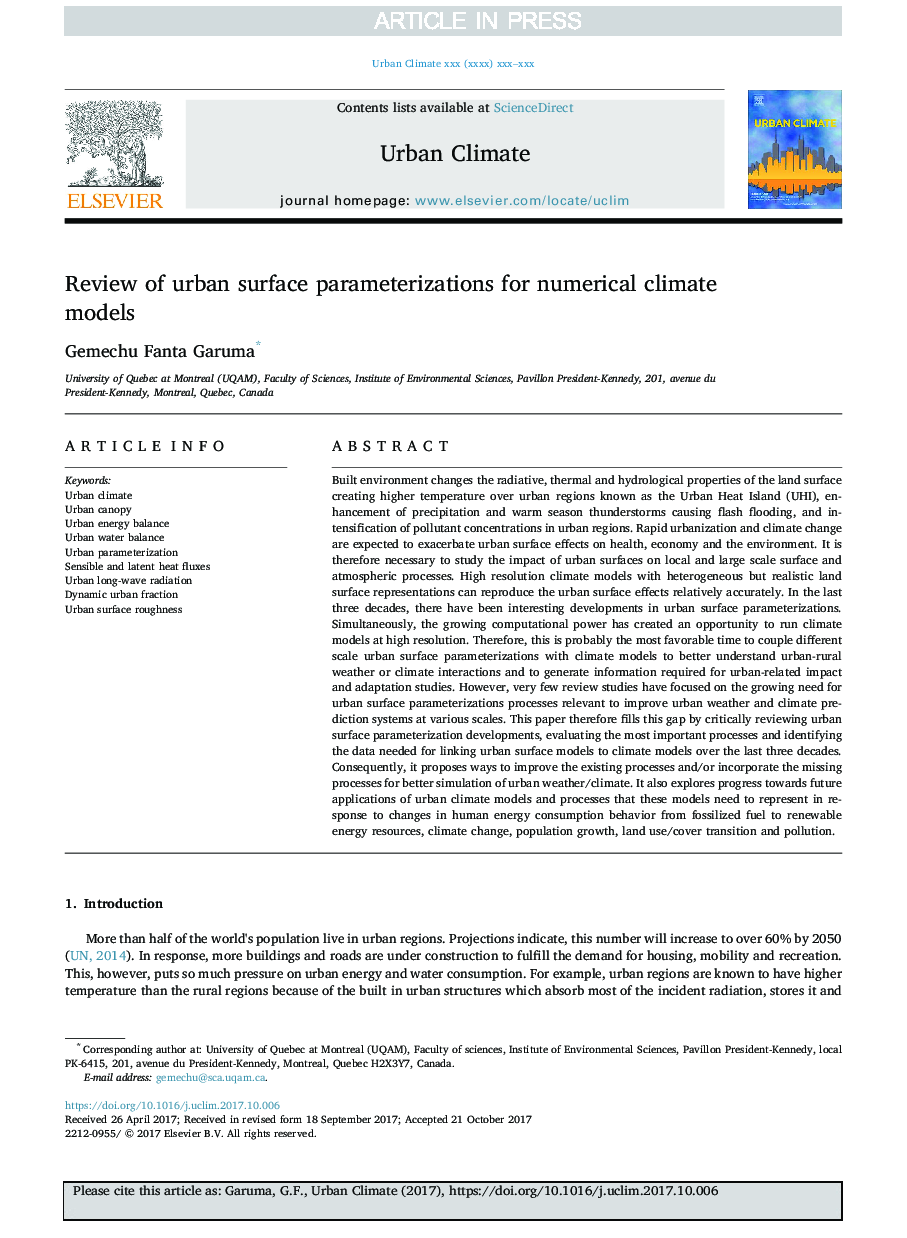| Article ID | Journal | Published Year | Pages | File Type |
|---|---|---|---|---|
| 6576925 | Urban Climate | 2018 | 22 Pages |
Abstract
Built environment changes the radiative, thermal and hydrological properties of the land surface creating higher temperature over urban regions known as the Urban Heat Island (UHI), enhancement of precipitation and warm season thunderstorms causing flash flooding, and intensification of pollutant concentrations in urban regions. Rapid urbanization and climate change are expected to exacerbate urban surface effects on health, economy and the environment. It is therefore necessary to study the impact of urban surfaces on local and large scale surface and atmospheric processes. High resolution climate models with heterogeneous but realistic land surface representations can reproduce the urban surface effects relatively accurately. In the last three decades, there have been interesting developments in urban surface parameterizations. Simultaneously, the growing computational power has created an opportunity to run climate models at high resolution. Therefore, this is probably the most favorable time to couple different scale urban surface parameterizations with climate models to better understand urban-rural weather or climate interactions and to generate information required for urban-related impact and adaptation studies. However, very few review studies have focused on the growing need for urban surface parameterizations processes relevant to improve urban weather and climate prediction systems at various scales. This paper therefore fills this gap by critically reviewing urban surface parameterization developments, evaluating the most important processes and identifying the data needed for linking urban surface models to climate models over the last three decades. Consequently, it proposes ways to improve the existing processes and/or incorporate the missing processes for better simulation of urban weather/climate. It also explores progress towards future applications of urban climate models and processes that these models need to represent in response to changes in human energy consumption behavior from fossilized fuel to renewable energy resources, climate change, population growth, land use/cover transition and pollution.
Keywords
Related Topics
Physical Sciences and Engineering
Earth and Planetary Sciences
Earth and Planetary Sciences (General)
Authors
Gemechu Fanta Garuma,
